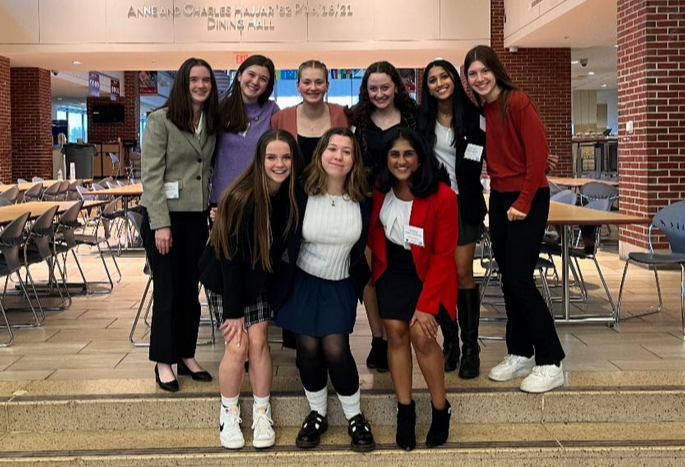Everyone has a story, but that one story doesn’t define who they are and nor does the group they belong to. Recently, I watched a TED Talk by Chimamanda Ngozi Adichie during AP Lang titled: “The Danger of a Single Story.” Chimamanda Ngozi Adichie is a Nigerian author and public speaker known for telling authentic stories and using her work to educate people about stereotypes. Mrs. Whitlock had prefaced the video by telling us we were starting our race unit. I immediately thought this was just going to be another video, another lesson, another talk about what I already knew, how racism is bad, blah, blah, blah. Nothing new. I could not have been more wrong. Adichie started her talk by explaining how she used to read British and American books as a child, from the age of 4. She then explained how, when she started writing soon after, she wrote characters modeled after the ones in her books: blue-eyed, blonde, white, who played in the snow — yet she had never seen snow before because she lived in Nigeria. So where did these characteristics come from?
Though we may not realize it, we are far more impressionable by the stories we consume than we think we are. Because all she read as a child were books about foreign characters, she was convinced that books by nature must be about foreigners. That is by no means to say that she did not want to read African books nor that they weren’t good enough; there simply weren’t enough written, and they were harder to acquire. After reading authors like Chinua Achebe and Camara Laye, Adichie went through a mental shift, realizing that there were characters that looked like her in books. So much so that she started writing about characters like that too. Those African American writers saved Adichie from having a single story about what books are — from having a narrow-lensed perception of what literature should be.
This has the potential to turn into a vicious, never-ending cycle. Let’s say, just as an example, a seven-year-old girl from Puerto Rico reads some books, sees that not one character in the book looks like her, and thinks that all books, good books at least, worthwhile books, must have white characters. She grows up and wants to be a writer. She sits down to write a story, but all she can think about before her pen hits the paper is “But my story isn’t good enough.” Her story most definitely would have been interesting, filled with rich culture and family history, but she doesn’t know that. She hasn’t read any good books with a character like her. So she puts her pen to the paper and writes what she’s seen written. Another writer of color. Another white story.
I asked Whitney Uche, an 11th grader with an African American heritage, what her experience with a single story was. She had told me that as a child, the “majority of actors, characters, or cartoons contained white characters, leaving [her] with the impression that that was the norm.” When going into stores to choose a new doll to play with, immediately I would aim for the white dolls due to their nice hair and cute features. I thought it was normal to have a white doll. Looking back, of the many dolls I had, only 2 were black,” she had told me. Whitney chose such dolls with “nice hair” and “cute features” because the media had portrayed them as such. Looking into 2000’s and 2010’s tv shows, it’s easy to recognize that most black characters either played into stereotypes or were whitewashed to fit into conventional Eurocentric beauty standards. The “popular girl” in every early 2000’s drama had straightened hair. Even Mia from Princess Diaries-who is not of African descent- was seen as weird and ugly when she had curly hair but beautiful once her hair was “tamed.” Whitney concluded by saying: “[My] younger sister also was exposed to a single story. When she plays games, she dresses up her characters as white with blonde hair. [Whitney] get[s] confused and [she] ask[s] her, why not the black little girl? But [Whitney’s sister] refuses and brushes off the topic.”
One year, when she had turned eight, Adichie’s family had gotten a new house boy, Fide. The first thing her mom told her was that his family was very poor. That was the defining characteristic in her mind whenever she thought about him. Pity. Not in a patronizing way–not that she intended anyway–but from a place of well-meaning. Her family later on went to Fide’s house where she saw a beautiful woven basket. She recalled how, embarrassingly, the first thought that came to mind was how anybody in his family, a family so poor, actually made anything. All she had heard about them was how poor they were, so it became impossible for her to see them as anything but poor. Their entire lives were reduced to a single word: poor. Their poverty was Adichie’s single story of them. When you hold a single story of someone, you remove yourself from relating to that person in any way. There is no possibility for feelings more complex than pity in Adichie’s case; no possibility of a connection as human equals. When we reject the single story, when we realize that there never is a single story about any place, we regain a kind of paradise.
By Meghana Kunamneni ’25, Contributing Writer
25mkunamneni@montroseschool.org













